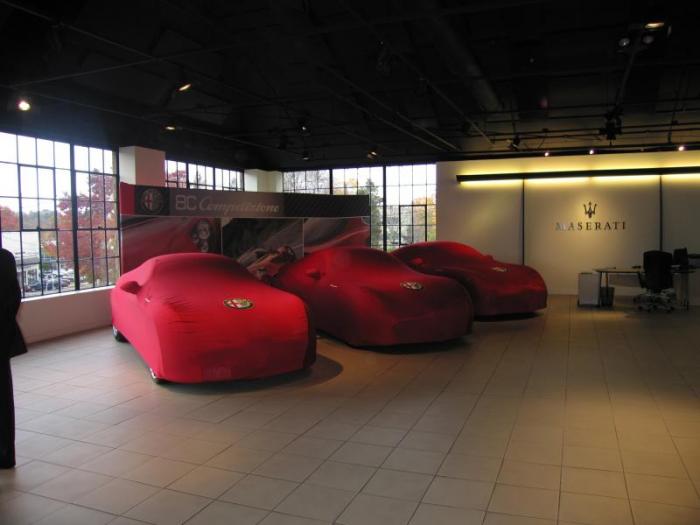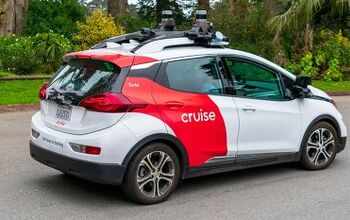2 Views
Alfa In America: Glorious Return or Cynical Ploy?
by
Edward Niedermeyer
(IC: employee)
Published: February 16th, 2010
Share
Fiat/Chrysler CEO Sergio Marchionne seems ever more committed to the idea of bringing the Alfa Romeo brand to the United States, telling Automotive News [sub]:
I’m a lot more confident now that Alfa Romeo will reconstitute a product offering that is acceptable globally, and more in particular in the United States and Canada. There is a strong likelihood that the brand will be back here within the next 24 months
Needless to say, this is the kind of news that gets automotive enthusiasts all hot and bothered: a European brand known for its small hatches and dynamic brio coming to a US market that’s not known for offering either. And though more choice for consumers is typically a good thing, Marchionne’s motivations for bringing Alfa to the US are less than entirely admirable. As with so many decisions made in the auto industry, keeping enthusiasts happy comes at the expense of smart business choices.Edward Niedermeyer
More by Edward Niedermeyer
Published February 16th, 2010 11:00 AM
Latest Car Reviews
Read moreLatest Product Reviews
Read moreRecent Comments
- CanadaCraig My 2006 300C SRT8 weighs 4,100 lbs. The all-new 2024 Dodge Charge EV weighs 5,800 lbs. Would it not be fair to assume that in an accident the vehicles these new Chargers hit will suffer more damage? And perhaps kill more people?
- Akila Hello Everyone, I found your blog very informative. If you want to know more about [url=
- Michael Gallagher I agree to a certain extent but I go back to the car SUV transition. People began to buy SUVs because they were supposedly safer because of their larger size when pitted against a regular car. As more SUVs crowded the road that safety advantage began to dwindle as it became more likely to hit an equally sized SUV. Now there is no safety advantage at all.
- Probert The new EV9 is even bigger - a true monument of a personal transportation device. Not my thing, but credit where credit is due - impressive. The interior is bigger than my house and much nicer with 2 rows of lounge seats and 3rd for the plebes. 0-60 in 4.5 seconds, around 300miles of range, and an e-mpg of 80 (90 for the 2wd). What a world.
- Ajla "Like showroom" is a lame description but he seems negotiable on the price and at least from what the two pictures show I've dealt with worse. But, I'm not interested in something with the Devil's configuration.


































Comments
Join the conversation
This is a simple one... FACT: People bought Alfas in the 50s, 60s, 70s and 80s with their hearts not with their minds. Buyers bought Alfas however because driving an Alfa **WAS** more fun than much else on the road and there was a clear tangible trade-off: driving awesomeness/style/coolness VS. reliability/cost of ownership. This is what drove Alfa sales, but the switch to FWD saloons (the 164) began the process of giving up the emotional aspects, while gaining little in return. The tradition Alfa model (fun cars with demanding reliability) was probably doomed, but at least it was fun while it lasted. Today, are Alfas much more fexciting than BMWs, Minis, or Audis? Fun enough to justify the risks of buying a new car that may or may not be reliable, and may or may not be dealership supported again? It's not like a modern Alfa Romeo is Europe's best kept secret - they hardly sell there and are an also-ran brand. Alfa has become very much like SAAB was in the 90s and 2000s - its a car people WANTED to love and buy as an insider's alternative to the masses of BMWs and Audis, BUT they were inferior in performance, driving capabilities, reliability, and fun factor. What's the point? When SAAB ditched the hatch in North America, there was not 1 single reason left to buy one, other than its not a BMW. This will be true for Alfa. Some Alfas would sell in the USA, but only to hard-core Alfisti, and the handful of buyers willing to put down the hard cash just because an Alfa isn't a BMW and they want something different. There will be a much larger group of buyers with the same mindset, but when they drive both, and add up the +/- column, most won't actually pony up the dosh. Now if they could craft another RWD Alfa Coupe and Saloon that rumbled, smelled, roared, and ran like a man's car, with modern performance and was stupid exciting to drive, then they would be onto something... Please note I say this as someone who LOVES olders SAABs and Alfas, and really hopes they will still somehow succeed in the future.
What Marchione is going to do to Alfa has already been done to Saab by GM. And who - with a straight face - is telling them that bringing the Fiat 500 to the US is a sound business plan? They will find it hard to break the sales numbers of Smart cars. If you want an Alfa, and are willing to spend $20K+ get yourself a 70's vintage GTV. Sadly, Alfa is history.